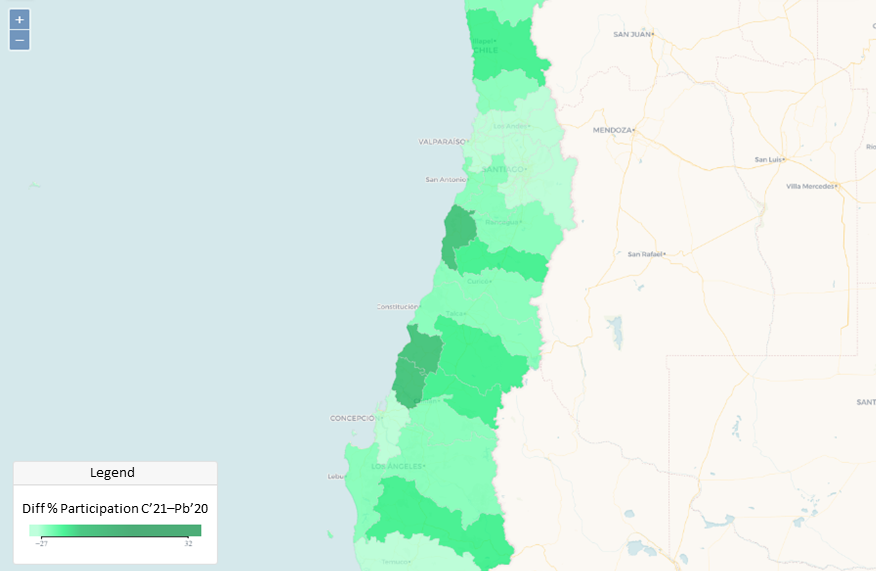
How differences in turnout explain Chile's Constituent Elections results.
Constituent Elections in Chile
The decrease of turnout in communes with a higher development index could explain the results of the Constituent Elections with a clear majority of independent representatives, as opposed to the aspirations of the “oficialismo”.
On May 15 and 16, Chileans voted in the Constituent Elections coinciding with the elections for governors, mayors and city councilors.

Despite the coincidence, the overall turnout was a meager 43.3% and the specific turnout for Constitutional Elections was 41.34%, lower than the 50.9% turnout that was mobilized to achieve the approval of the constitutional change in the Plebiscite of October 2020.
The appointment of the 155 people in charge of drafting the proposal for the new constitutional text led to expect a greater participatory response, but since the legislative change in 2012 for voluntary voting instead of compulsory voting, Chileans show their disaffection with very low turnout rates (35% in the past municipalities of 2016).
The Chilean media have pointed to distrust in the parties and in general in the political class as the main abstentionist motivation behind the demobilization of the Chilean electorate, which has caused a serious rethinking on the voluntariness of the vote. However, this reality hides an unequal level of turnout that explains the results obtained.

The central regions, with a high concentration of the census, O`Higgins (with 46.63% turnout), Metropolitan Santiago (44.15%) and Valparaiso (43.77%), registered the highest turnout rates, despite the fact that all of them decreased with respect to the turnout achieved in the Plebiscite.

Comparing the turnout data of the Plebiscite 2020 and Constituents 2021, we observe that the provinces of Itata in the Ñuble Region (with an increase of 20.43 percentage points in the turnout), Cardenal Caro in the O`Higgins Region (with an increase of 18.73 pp) and Cauquenes in the Maule Region (with an increase of 11.79 pp) are the provinces with the highest levels of turnout.

Analyzing the results by communes, we observe that tournout increase the most in percentage points with respect to the turnout achieved in the Plebiscite in areas with Low and Intermediate levels of development.

Focusing on the metropolitan communes of Santiago, we observe that where the highest level of development is concentrated, turnout decreased the most, being in communes such as San Pedro and Alhué in the province of Melipilla, with a low level of development, where turnout increased between 12 and 14 percentage points.

On the contrary, it was in the districts where households have the highest levels of welfare, such as Las Condes (-6.53 pp) and Vitacura (-4.58 pp) where turnout decreased.

The profile of the households in Las Condes (shown in orange versus the national average in green) is clearly superior in indicators of well-being, development index, economic level and education, with a predominance of women in the adult and young population.
This behavior can be generalized to the rest of the regions. That is to say, the lower the development index, the higher the increase in turnout in Constituent Assembly 2021 compared to what occurred in the October 2020 Plebiscite, which explains why the independent candidates were the winners in these constituents, compared to what the polls indicated. The candidates of the ruling party were far from obtaining the 52 seats (or one third of the assembly) necessary to influence the content of the new Constitutional Text that will be voted in mid-2022.








Add comment